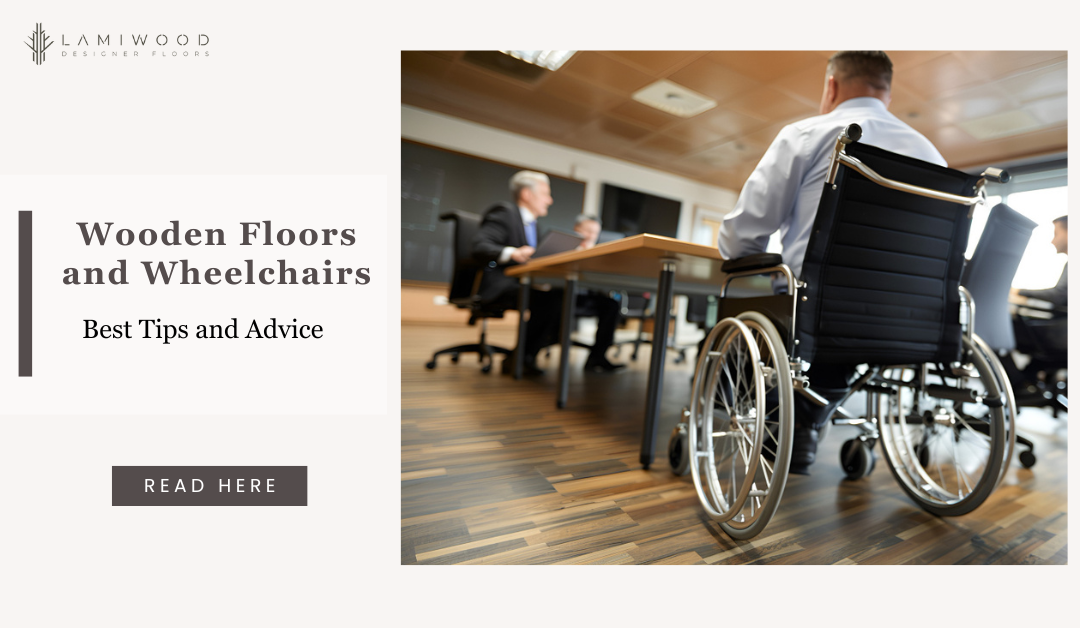When it comes to creating an accessible and inclusive home, flooring is an important consideration. For individuals who use wheelchairs or other mobility devices, the right flooring can make a big difference in their ability to navigate and enjoy their living space. Let’s explore the benefits of wooden flooring for wheelchair accessibility, and provide advice and tips for creating a safe and functional home environment.
Benefits of Wooden Flooring for Wheelchair Accessibility
- Smooth and Level Surface
One of the primary benefits of wooden flooring for wheelchair accessibility is its smooth and level surface. Unlike some other flooring materials, such as carpet or natural stone, wooden planks create a flat and even surface that is easy to navigate with a wheelchair or other mobility device. This can help to reduce the risk of tripping or tipping and make it easier to move around the space.
- Durability and Resilience
Another benefit of wooden flooring for wheelchair accessibility is its durability and resilience. wooden is designed to withstand heavy foot traffic and resist scratches, dents, and other types of wear and tear. This is especially important for individuals who use wheelchairs, as the constant movement and pressure of the wheels can cause damage to less durable flooring materials over time.
- Easy Maintenance
Wooden flooring is also easy to maintain, which is important for individuals who may have limited mobility or energy. Unlike carpet, which can trap dirt and allergens and require frequent vacuuming, wooden can be easily cleaned with a damp mop or cloth. This can help to reduce the risk of respiratory issues and create a healthier and more hygienic living environment.
Tips for Creating an Accessible Wooden Flooring Environment
- Choose the Right Texture
When selecting wooden flooring texture for wheelchair accessibility, it’s important to choose a texture that provides good traction and slip resistance. Look for wooden products with a slightly textured or embossed surface that can help prevent slipping or sliding, especially in areas where moisture may be present, such as bathrooms or kitchens.
- Consider Thresholds and Transitions
Another important consideration when creating an accessible wooden flooring environment is the use of thresholds and transitions. These are the areas where one type of flooring meets another, such as where wood meets carpet or tile. To ensure a smooth and safe transition for wheelchair users, it’s important to choose low-profile thresholds and transitions that are flush with the surrounding flooring.
- Provide Adequate Clearance
When installing wooden flooring in an accessible environment, it’s important to provide adequate clearance for wheelchair users to navigate the space. This means ensuring that there is enough room to turn and maneuver around furniture, fixtures, and other obstacles. As a general rule, it’s recommended to provide at least 60 inches of clear floor space in all directions to allow for comfortable and safe movement.
- Use Contrasting Colors
Finally, when creating an accessible wooden flooring environment, it’s important to use contrasting colors to help define different areas of the space. This can be especially helpful for individuals with visual impairments, as it can make it easier to navigate and locate specific areas of the home. For example, using a darker wooden color in a hallway and a lighter color in adjacent rooms can help to create a clear and defined pathway for wheelchair users.
Conclusion
Creating an accessible and inclusive home environment is important for individuals who use wheelchairs or other mobility devices. By choosing wooden flooring and following these tips for creating an accessible flooring environment, you can help to ensure that your home is safe, functional, and welcoming for all. Whether you’re renovating an existing space or building a new home from scratch, considering the needs and preferences of wheelchair users can go a long way in creating a comfortable and inclusive living environment.

